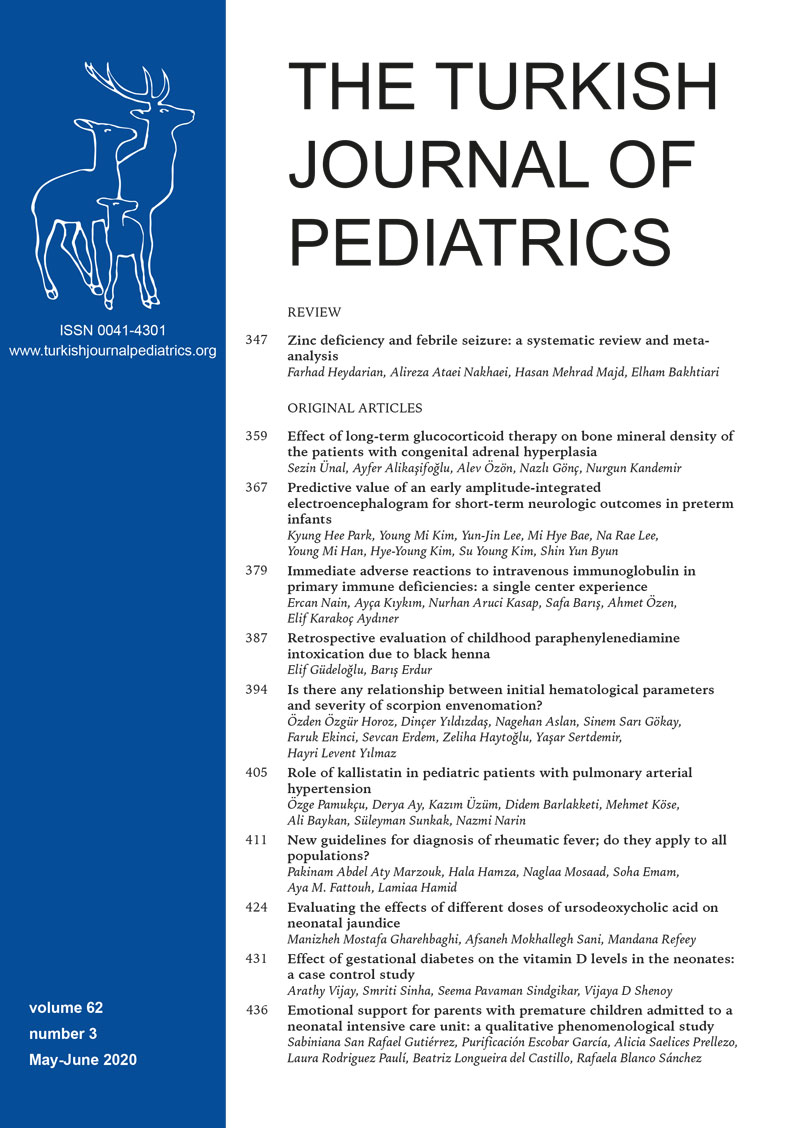Abstract
Background and Objectives. To evaluate the efficacy of recently updated Jones criteria for diagnosis of rheumatic fever in high incidence populations like Egypt.
Methods. Clinical data of 891 Egyptian patients with rheumatic fever, aged 5-15 years in a highly specialized rheumatic fever clinic were reviewed retrospectively from March 2014 to March 2016. Discriminant analysis was used to detect the most effective predictors for diagnosis of rheumatic fever in our patients incorporating echocardiographic criteria. We compared our results to the most recent update by the American Heart Association.
Results. The most effective predictors of rheumatic fever included arthritis, carditis, chorea, aortic regurgitation, grades of mitral regurgitation ≥10mm length and velocity ≥2.5 m/s, thick anterior mitral valve leaflets, elevated acute phase reactants, positive family history and prolonged PR interval. Our predictors showed a high sensitivity of 93%, a specificity of 62% and an overall prediction accuracy of 81.4%.
Conclusion. We concluded that strict application of updated Jones criteria may lead to under diagnosis of rheumatic fever in highly endemic countries. We recommend further studies to examine the sensitivity of the most recent update of Jones criteria on other highly endemic populations.
Keywords: Egypt, limiting arthralgia, prediction model, rheumatic fever, subclinical carditis
Copyright and license
Copyright © 2020 The Author(s). This is an open access article distributed under the Creative Commons Attribution License (CC BY), which permits unrestricted use, distribution, and reproduction in any medium or format, provided the original work is properly cited.














